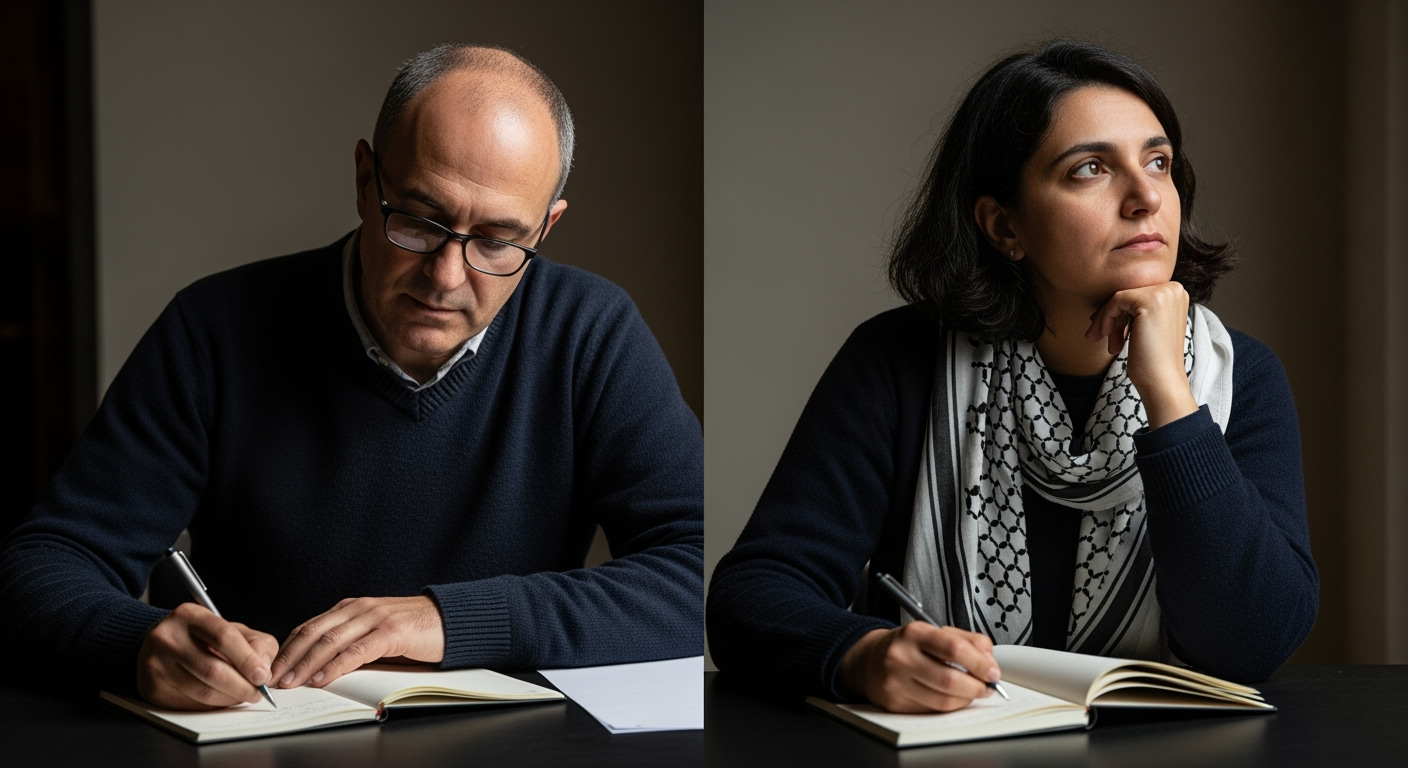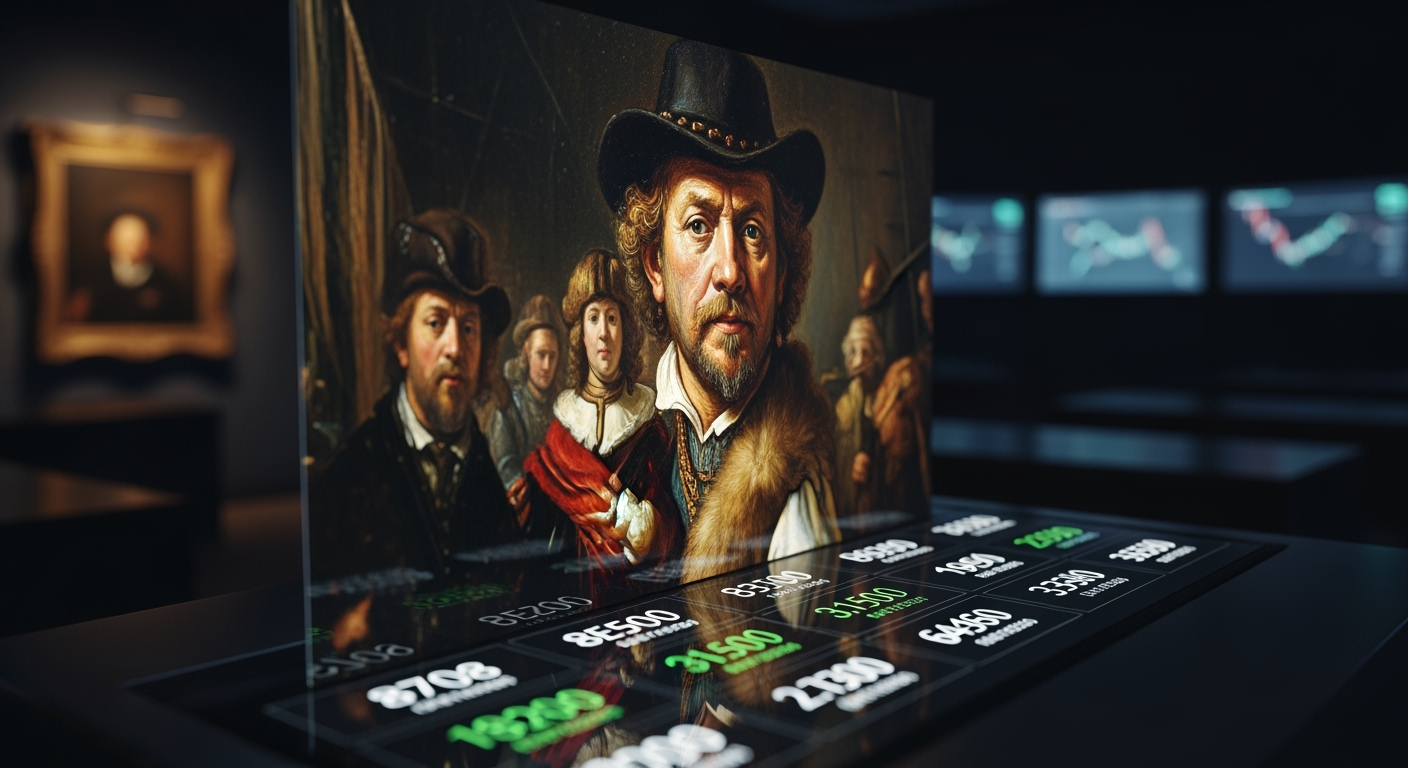Related Articles

"Khartoum" Documentary Puts a Human Face on Sudan's Unfolding Crisis

Voices from the Crucible: Israeli and Palestinian Authors Grapple with Enduring Trauma





NEW YORK, NY — In a groundbreaking move set to redefine art ownership, billionaire collector Thomas S. Kaplan is preparing to launch shares of his acclaimed Leiden Collection, which includes 17 paintings by Dutch Golden Age master Rembrandt van Rijn, on a public stock exchange. This unprecedented initial public offering (IPO), dubbed "Project Minerva," aims to democratize access to some of the world's most significant artworks, allowing everyday investors to own a fractional piece of art historically reserved for the ultra-wealthy. The offering, which could introduce "Rembits" — digital shareholder tokens combining Rembrandt's name with Bitcoin — as early as the first half of 2026, signals a transformative shift in the intersection of finance and fine art.
Thomas S. Kaplan, known for amassing the world's largest private collection of Dutch Golden Age paintings, is venturing into uncharted territory by fractionalizing his 220-work Leiden Collection. The collection boasts not only a substantial number of Rembrandt's works but also includes pieces by Johannes Vermeer and Frans Hals, among other luminaries of the 17th century. Kaplan's motivation extends beyond mere financial innovation; he envisions "Project Minerva" as a means to secure the collection's future and broaden public engagement with these cultural treasures. With his children reportedly uninterested in inheriting the physical artworks, fractionalization offers a unique solution to keep the collection intact and accessible for public viewing, rather than seeing it dispersed or locked away in private storage. Kaplan believes this model could "secure the next 400 years of Rembrandt," by allowing millions to take an ownership interest and, by extension, a greater interest in the artist himself.
The proposed mechanism for this offering involves listing shares, potentially on the New York Stock Exchange, with Kaplan's family retaining a controlling interest to ensure the collection's ongoing mission as a lending library for museums worldwide. While the precise mechanics of the "Rembits" — a term Kaplan trademarked in 2020 — are still being refined, the concept points toward a digital marketplace where these fractional ownership tokens could be traded. This bold move represents a significant departure from traditional art patronage, ushering in a new era where masterpieces are not just seen but also owned by a global community of investors.
The concept of fractional art ownership is not entirely new, but its recent surge in popularity is driven by technological advancements and a desire among investors to diversify portfolios. Platforms like Masterworks, established in 2017, have pioneered this model by acquiring "blue-chip" artworks — high-value pieces by renowned artists like Jean-Michel Basquiat, Andy Warhol, and Pablo Picasso — and then filing offerings with the Securities and Exchange Commission (SEC) to sell shares to the public. This allows individuals to invest in art for as little as $20 per share, making a market once exclusively for the ultra-wealthy accessible to a much broader retail investor base.
Fractional ownership functions similarly to how mutual funds or exchange-traded funds (ETFs) operate for stocks, pooling investments to give individuals a stake in a diversified collection of assets. Proponents argue that this model allows for portfolio diversification with tangible assets, offering returns that may not correlate directly with traditional financial markets. The platforms typically handle the complexities of art ownership, including research, authentication, maintenance, storage, and eventual sale, placing these burdens in the hands of experts. This streamlined approach frees investors from the operational challenges and significant costs traditionally associated with owning fine art outright.
For investors, the opportunity to own a piece of a Rembrandt or a Vermeer opens doors to an asset class previously out of reach, potentially offering both financial returns and the cultural cachet of art ownership. Blue-chip art has demonstrated a track record of appreciation, with some contemporary works generating annualized returns of 13-32% on platforms like Masterworks. This can be particularly appealing in an economic climate where traditional investments face volatility, positioning art as a potential hedge against inflation and a stable long-term asset.
Beyond individual investors, the fractionalization trend could inject new liquidity and funding into the art market. It enables collectors like Kaplan to manage the future of vast collections without selling off individual pieces, thus preserving their integrity and public access. The move also aligns with a broader trend of alternative investments, from real estate to rare collectibles, becoming increasingly accessible through fractional models. This expanding landscape suggests a future where high-value assets across various sectors could be increasingly tokenized and traded on public exchanges, drawing in a new generation of digitally native investors.
Despite the exciting prospects, fractional art investment carries inherent risks that prospective investors must carefully consider. A primary concern is the illiquidity of fractional shares. Unlike traditional stocks, art shares can have long lock-up periods—ranging from three to ten years—and selling shares on a secondary market may prove difficult or yield unfavorable returns. This means capital can be tied up for extended periods, and exit opportunities might be limited.
The subjective nature of art valuation also poses a risk. The value of an artwork is influenced by trends, tastes, and market sentiment, making it prone to considerable fluctuations with no guarantee of appreciation. The art market itself is often opaque and largely unregulated, differing significantly from securities and real estate markets. This lack of transparency can raise concerns about accountability, potential fraud, and even money laundering, though platforms often employ their own authentication and valuation processes. Investors also face high fees, including management, insurance, storage, and transaction costs, which can significantly erode potential profits. Furthermore, fractional ownership typically means investors have limited control over the artwork's display, storage, or the timing of its sale, leaving these decisions to platform managers.
Some experts express skepticism regarding the investment potential of such offerings, viewing them more for "sentiment" than serious financial returns. The relative newness of the fractional art market means it lacks a long-term historical track record, making it difficult to predict sustained performance. These factors underscore the importance of thorough due diligence and a clear understanding of the speculative nature of such alternative investments.
Thomas Kaplan's "Project Minerva" represents a pivotal moment for the art world, merging the timeless appeal of Old Master paintings with the modern mechanisms of public finance. By offering shares in the Leiden Collection, a new avenue is being carved for the preservation of cultural heritage and the expansion of art appreciation. This initiative has the potential to introduce millions to the genius of artists like Rembrandt, whose profound insight and innovative techniques continue to captivate audiences centuries later.
While the "democratization of fine art ownership" offers enticing opportunities for diversification and engagement, the associated risks demand prudent consideration from investors. The coming years will reveal whether this blend of artistic legacy and financial innovation truly revolutionizes the art market, establishing a new paradigm for how masterpieces are cherished, managed, and owned across generations. The success of Project Minerva could set a precedent, transforming art from an exclusive commodity into a publicly traded asset, reshaping its future trajectory in the global economy.